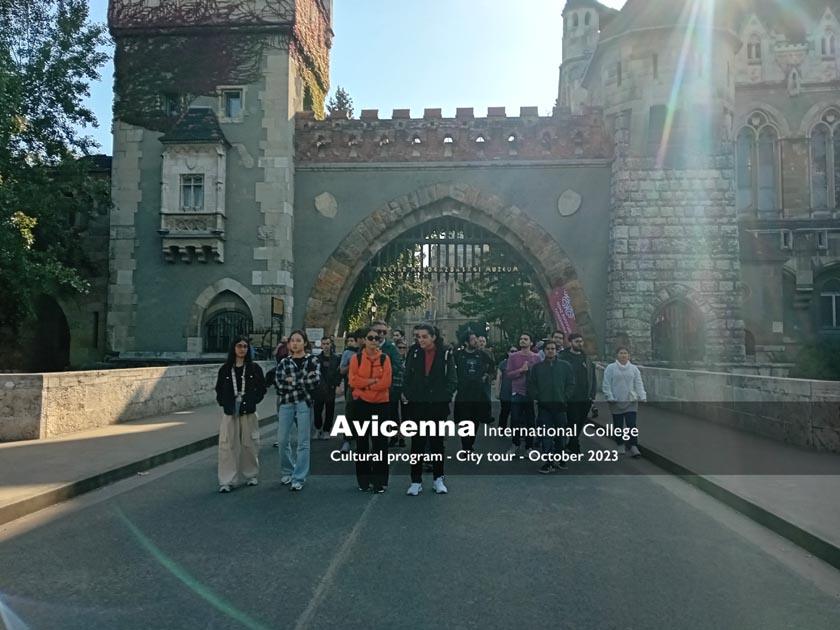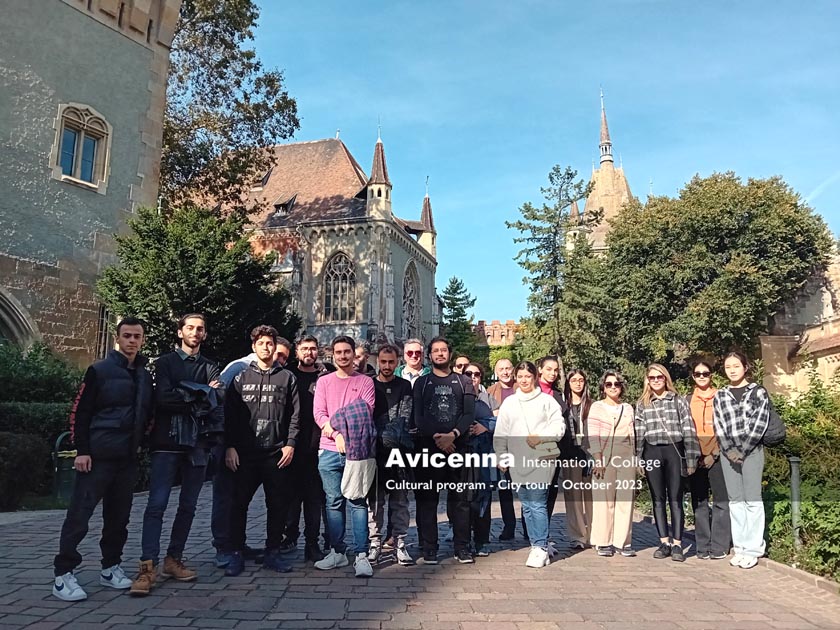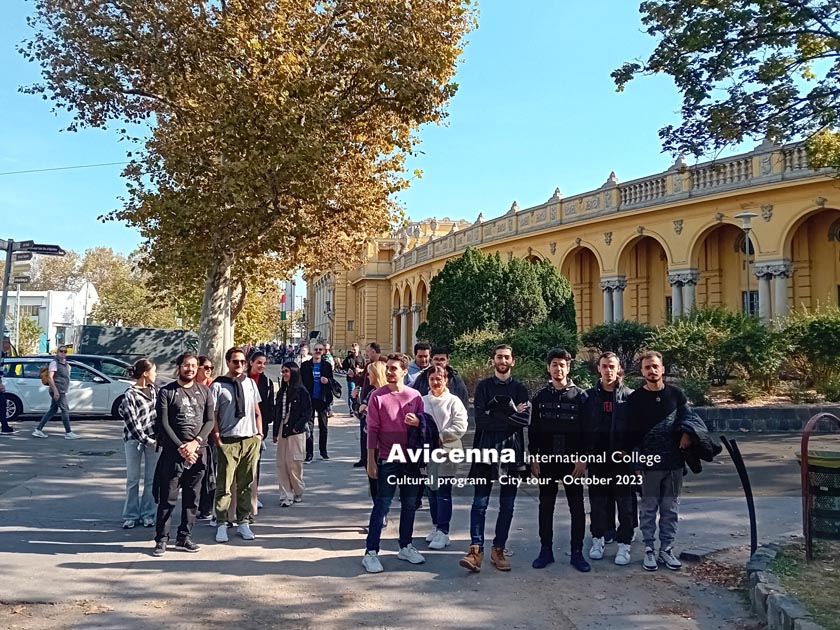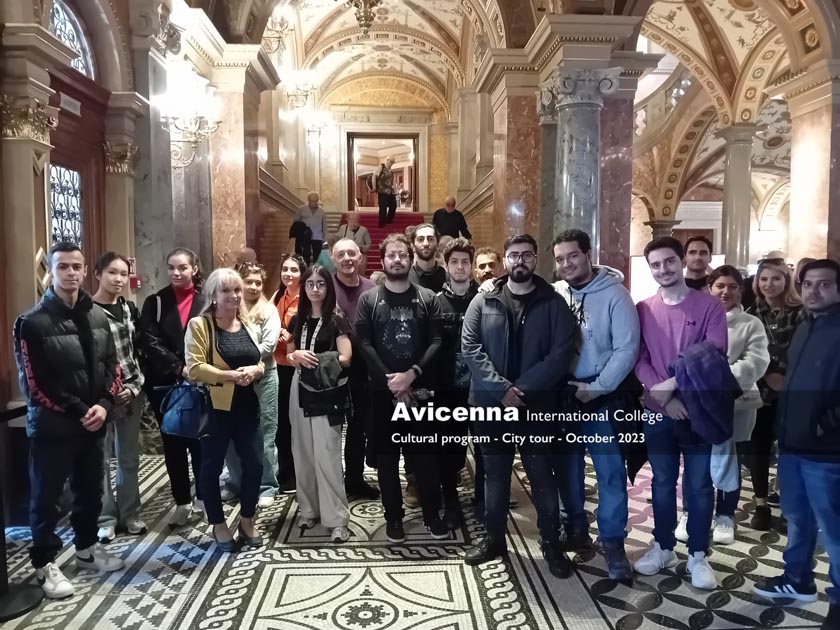On a beautiful autumn day at 9.30 am, 22 students met in Heroes’ Square to take part in the first of a series of AIC-organized city tours, called ‘Step in the footsteps of heroes’.
This cultural programme is an opportunity for our young adults, mainly Persians, students, who have been coming to AIC for a few weeks, to gain an insight into the culture, behavior and customs of EU citizens and the history of the country. We also wanted to help them find their way around the city. Our Middle Eastern students learned how many minutes of being late is acceptable in Europe, or why the quality of a handshake is important to make a good first impression, or how to buy a ticket from a ticket machine.


The semi-circular colonnade of Heroes’ Square, with its statues of Hungarian heroes, gives the audience the opportunity to understand the historical context and experiences of 1000 years. They listened quietly and attentively to a series of logical connections between the events and interesting stories, interrupted several times by questions that inspired deeper reflection.
Some historical events in Hungary (e.g. the Mongol invasion in the 13th century) were compared with similar periods in Persian history. After learning about the sequence of events, the students were able to foresee what would happen next, since knowledge of history teaches us to foresee the future.
The beautiful buildings of the City Park, such as Europe’s first open Ice Rink, the Vajdahunyad Castle, the Széchenyi Baths, the Zoo and the Gundel Restaurant, gave our students the opportunity to learn about different architectural styles, the bathing culture brought to Hungary by the Turks in the Middle Ages and the human values of the Gundel dynasty that made them prosper.
We also traveled by the first underground on the continent to see the interior of the Opera House, which has captured the interest of our young adult students in ballet and opera, unique in Europe.
Our walk took us through Deák Square to the Basilica, where the difficulties of building this magnificent, biggest Catholic church over 50 years, the sacrifices of the people, and the tragedy which inspired many to create something great driven by gratitude were all moving, but true stories.
Hungarian Version:
Szép őszi napon 9.30-kor 22 diák találkozott a Hősök terén, hogy az AIC által számukra szervezett első “Lépj a hősök nyomába” nevezett városnéző programon vehessen részt.
Ez a kulturális program lehetőséget ad arra, hogy a néhány hete AIC-ba érkező fiatal felnőtt, főleg perzsa diákjaink betekintést nyerhessenek az EU-ban jellemző viselkedés kultúrába, szokásrendszerébe, valamint az ország történelmébe. A városban való eligazodást is segíteni szándékoztunk. Megtanulhatták közel keleti diákjaink, mennyi késés még nem sértő európában, vagy miért fontos a kézfogás minősége az első jó benyomás érdekében, vagy azt, hogyan lehet vonaljegyet vásárolni automatából.
A Hősök tere félköríves oszlopcsarnoka, a magyar hősök szobraival lehetőséget ad a hallgatóság számára, hogy 1000 év történelmi összefüggéseit, tapasztalatait megértsék. Csendben, figyelemmel hallgatták a logikus összefüggések és érdekes történetek sorát, amelyek mélyebb elgondolkodásra inspiráló kérdésekkel lettek többször megszakítva. Némely magyar történelmi eseményt (pl. mongol invázió a 13. században) összehasonlítottunk a perzsa történelem hasonló szakaszával. Az események sorát megismerve a diákok már maguk tudták megsejteni a további eseményt, hiszen a történelem ismerete megtanít minket a jövő megsejtésére is.
A Városliget adta gyönyörű épületek, mint európa első nyitott Műjégpályája, vagy a Vajdahunyad Vára, a Széchenyi Fürdő, Állatkert és a Gundel Étterem mind lehetőséget adtak diákjainknak az építkezési stílusokba való betekintés mellett megismerni, milyen fürdő kultúrát hoztak Magyarországra a törökök a középkorban és milyen emberi értékekkel tudott a Gundel dinasztia maradandó értéket alkotni.
A kontinens első földalattijával elutaztunk az Operaházat megtekinteni belülről is, mely felkeltette fiatal felnőtt diákjaink figyelmét az európában egyedülálló balett és operák iránt.
Sétánk a Deák téren keresztül a Bazilikához vezetett, ahol az 50 éven keresztül folyó megépítés nehézségei, az emberek áldozatossága, és a tragédiából megszületett nagy dolog hálából való megalkotása mind megkapó, de igaz történet volt.




